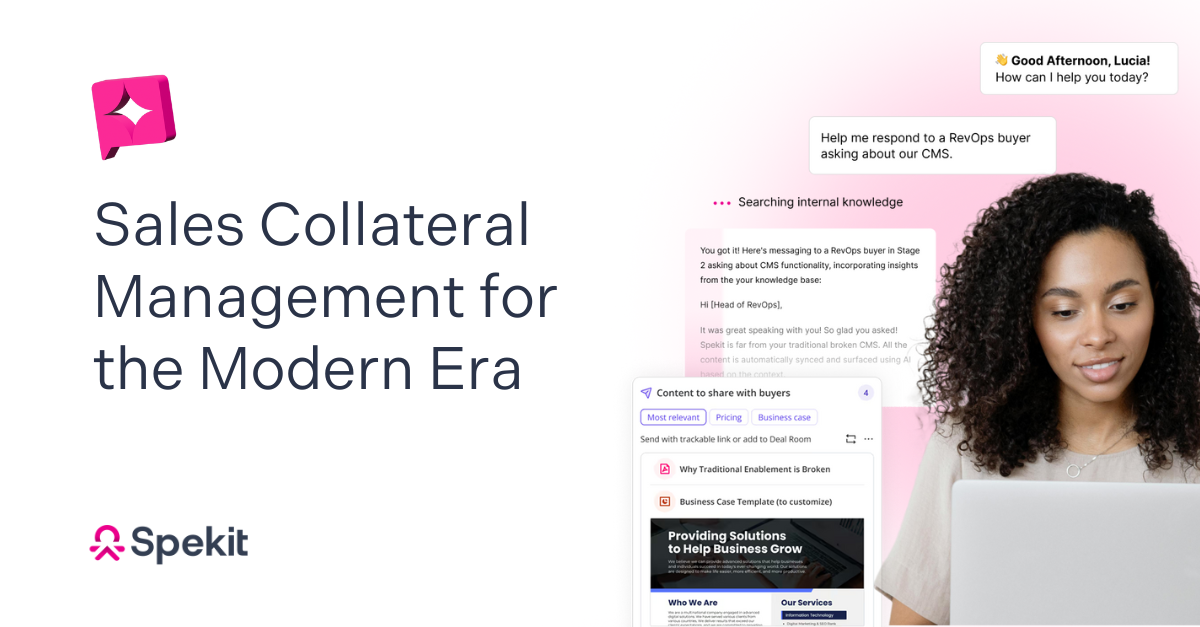Modern buyers expect more than static PDFs and outdated case studies. They expect dynamic, personalized, and just-in-time content experiences that anticipate their questions before they’re asked.
Traditional sales collateral models weren’t built for that. They relied on one-size-fits-all materials that quickly decayed, leaving reps searching for answers instead of selling.
Research shows that more than 86% of enablement leaders believe their reps use less than 60% of available content. Not because they don’t want to, but because it’s too hard to find, too disconnected from their workflow, or out of date by the time they need it.
This guide explores what modern sales collateral looks like in the age of AI-powered enablement, and how platforms like Spekit are redefining content management to make every rep more effective, every day.
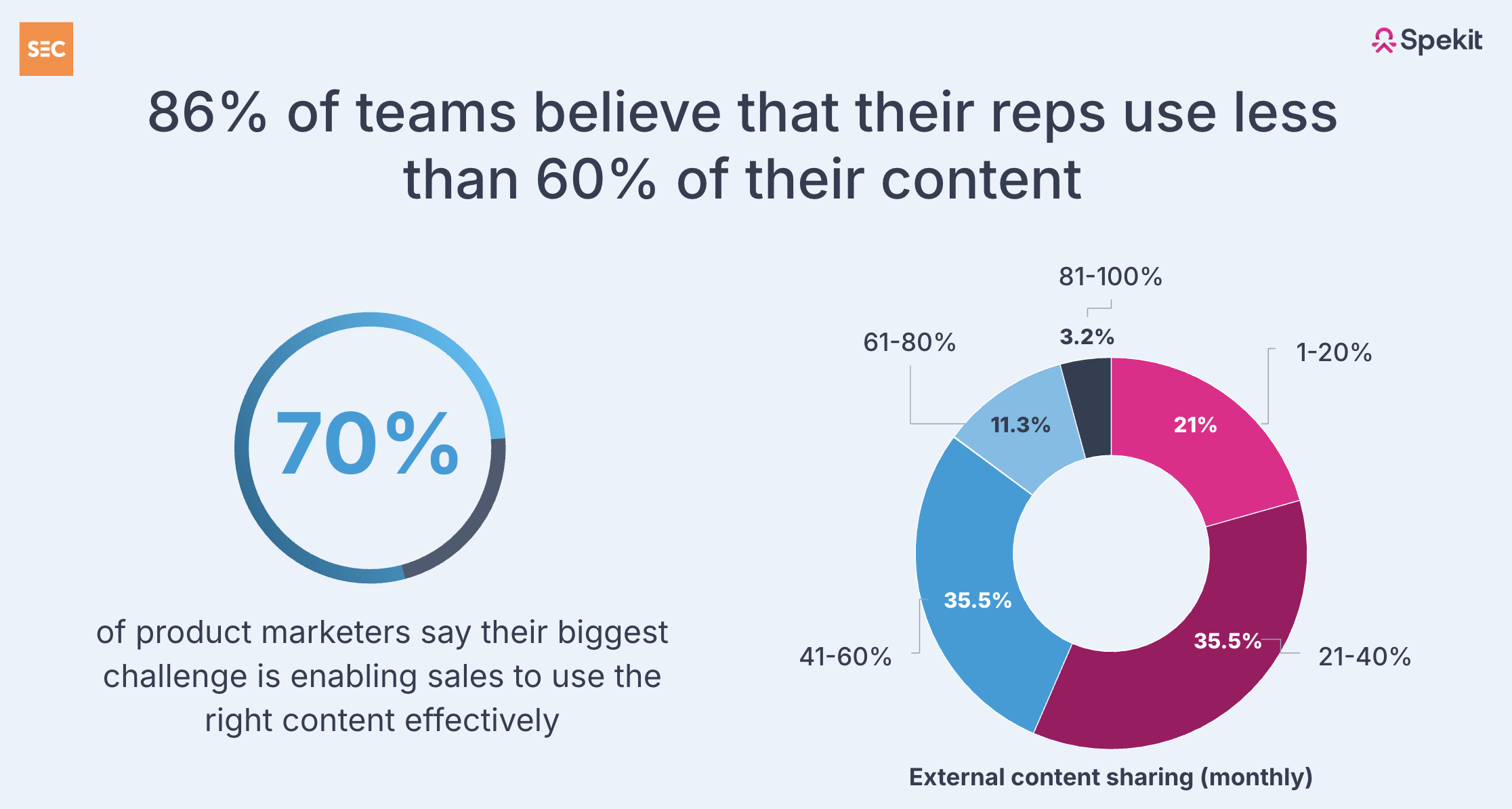
What is sales collateral?
Today, “sales collateral” doesn’t just mean brochures and data sheets. It spans dynamic, AI-driven content ecosystems that adapt to buyer context in real time like Deal Rooms, personalized Playlists, interactive case studies, and even AI-generated content.
Modern collateral should live where your reps live: inside their CRM, email, and workflow — not in buried folders.That’s why Spekit unifies content management, enablement, and automation in one platform — turning static repositories into intelligent, measurable, and living systems of action.
What is sales enablement collateral?
Sales enablement collateral has evolved from static playbooks into context-aware learning and guidance that happens in the flow of work.
With AI Sidekick, reps receive personalized recommendations, content, and coaching based on signals from CRM, call transcripts, and email threads, surfacing the exact material they need to close the next conversation.
It’s no longer about creating more content. It’s about creating the right content and delivering it at the right moment.
Sales collateral examples
Let’s look at some examples of sales collateral:
Modern sales collateral types
AI-Generated and Dynamic Collateral: AI now helps teams automatically generate, personalize, and recommend sales content.
Collaborative Deal Rooms: Instead of sending attachments, reps share a single branded link that centralizes every resource for buyers that's trackable, personalized, and always current.
Playlists for Everboarding: Think Spotify for enablement. Playlists curate content across formats and tools to guide reps through onboarding, role-specific training, or industry-focused selling sequences.
Interactive Case Studies & Revenue Insights: Traditional case studies have evolved into trackable, AI-curated proof points. With Revenue Insights, teams can see exactly which assets influence pipeline and revenue, connecting enablement directly to business impact.
Product one-sheets & data sheets

A product one sheet is a visual overview of your product or service. It’s typically a one-pager with a summary of all key information prospects need to know. To design a product one-sheet that increases conversions, you should determine your product's key selling points, use a compelling headline, organize information strategically, and use visual elements. Product one-sheets are more effective during the final stage of the buyer’s journey when they want to make a purchase decision.
Product data sheets provide technical and non-technical information about your products, such as specifications and features. It should be written in simple language and outlined so that readers can quickly pick out information.
Product data sheets fit nicely into the consideration stage. At this stage, buyers are actively researching which products solve their needs exactly. The data sheet details your product's capabilities, enabling prospects to understand its functionality.
Product one-sheets and data sheets are a great way to introduce a new product or service to internal teams and prospects/customers without bombarding them with information.
eBooks & whitepapers

Ebooks are a deep dive into your business. Compared to product one-sheets, ebooks tend to have detailed long-form content that gives deeper insights into your business, product offering, services, features, and value proposition. You should create ebooks for the awareness stage when prospects know they have a problem but aren’t sure what products can help them solve it.
Whitepapers are documents containing insights, facts, and figures that help to strengthen sales reps' pitch. It should have a lot of information about your company’s processes, product data, research findings, and other data-supported facts. It also supports salespeople during the consideration stage, where prospects might want to know about the impact of your product.
With eBooks and whitepapers, interactive content formats are better than static PDFs. You can embed video and multimedia, use interactive charts and graphs, and track engagement. Ebooks and whitepapers are ideal if you want to establish brand awareness, reinforce your brand, provide solutions to customers, or generally assert your brand as an expert in its field.
Case studies & testimonials

Case studies are used to pitch to prospects about your products using the experience of valued customers. They are a great sales tool because people are more likely to purchase if they see how your product benefits other customers with the same pain point. According to Gartner, third-party materials such as customer reviews and references give B2B buyers value affirmation.
Testimonials are honest reviews from a client endorsing your product. They could be videos, quotes, case studies, user-generated content, before-after stories, etc., presented in a way that increases your brand’s credibility. Effective testimonials go beyond simple statements about your product being great to provide details on what worked well.
Case studies and testimonials are most useful during the decision stage. They give prospects an idea of what using your product is like beyond your value proposition. Prospects can actually see how your product enabled another company to achieve its goal and be convinced to make a purchase
Blog posts

Blog posts are educational articles, guides, or news pieces on a particular topic or query published in a website’s blog section. They typically range from 500 to 2000+ words and incorporate rich media like infographics, videos, images, and interactive charts. These posts enable you to drive traffic to your website and boost brand awareness, conversions, and revenue.
Always keep your target audience or customers in mind when writing blog posts. Factors like their pain points, what they would search for, and how your product solves their problems should guide you through creating posts. The average attention span of a customer is 8 seconds, so blog posts should have an engaging opening, be easy to read, and have a subtle CTA that compels the reader to act.
Blog posts are perfect for gently selling to new leads. They motivate prospects to do further research about your product, and if your sales collateral is well structured, a simple blog post will guide the prospect down the pipeline.
Webinars
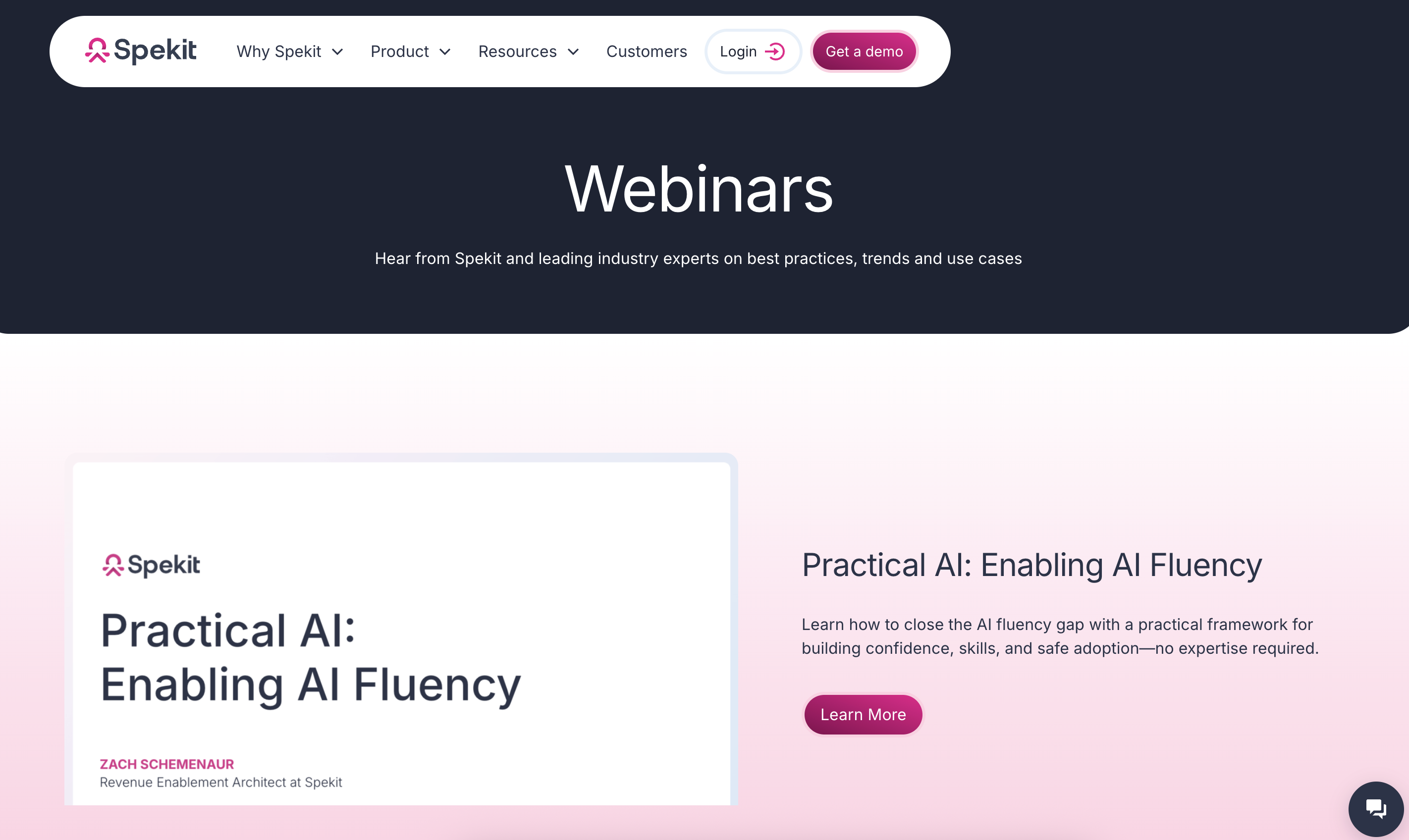
Webinars are interactive and personalized ways to engage prospects and move them closer to making a purchase decision. After attending webinars, attendees will likely request a demo from your sales team, visit your website for more information, inquire about pricing, and share the webinar content.
Businesses love webinars because they’re useful at every point of the buyer’s journey. Whether you’re targeting loyal customers or unaware prospects, webinars enable you to build connections and enhance your product’s visibility in the market. You can generate stronger loyalty from current customers and nurture leads that see your business as an authority in its industry.
Infographics
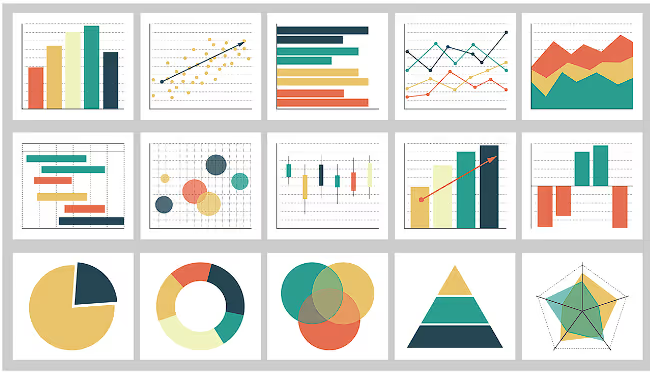
Infographics are visuals used to display information, especially complex data, in a clear, easy-to-digest format. Not all customers can understand facts, numbers, and statistics in written form. Infographics enable you to improve customer cognition using colors and structures that enhance their ability to see patterns and trends.
According to a DemandGen Report, infographics can boost your website traffic by 12%. Three effective infographics you can use to generate more engagement are:
- Process: If you want to break down a complex task into easy-to-follow steps, use a process infographic. This way, you display a process in linear order with clearly labeled directions that readers can understand.
- Statistical: Data and numbers are boring, but showing them using visually appealing illustrations and a compelling story makes it easier for prospects to read.
- Informational: Informational infographics are great for turning long-form content into short points, guidelines, or presentations.
Customers don’t want to waste time reading bulky information at the awareness stage. Infographics are a great way to draw leads in and help them remember key information.
Sales enablement collateral types
Now, let’s look at some examples of sales enablement collaterals that can help reps sell better:
Sales Battle Cards

When reps are pitching, they’re likely to encounter questions from prospects about how the value and performance of your product, services, and features rank against that of competitors. At this point, reps need to have information on your industry, the key benefits of your product, its unique selling points, and pricing comparison.
A sales battle card aggregates all this information in one place so that reps can prepare for prospect counter questions, stay ahead of the competition, make an effective pitch, and create situational pitches. Typically, battle cards are one-page visual aids that provide a quick overview of how your business’s products, features, services, and pricing compare to your competitors. It should also include facts and statistics to support claims, and answers to possible questions from prospects.
Battle cards come into play when prospects are deciding on whether to purchase your products or not. Before then, prospects would have researched products similar to yours to see if they could get better value for less money. With sales battle cards, reps can highlight the unique selling points of your product while addressing any other concerns.
Sales Playbooks

Sales playbooks are inward-facing sales enablement documents that contain a list of best practices for salespeople. It covers the entire selling process from prospecting to pitching so that sales reps know how to sell your products or services no matter the situation and win over even the most difficult prospects.
While you can create customized playbooks for your business, there are standard elements every playbook should have. They include a company overview, buyer personas, products/services/features, sales methodology and process, commission structures, and key performance indicators.
A well-designed sales playbook should have sales plays, which are steps for hypothetical situations reps face. You can structure playbooks according to a particular buyer person, a product or feature, or each stage in the sales process. For example, this playbook template guides reps on researching companies on LinkedIn, searching for prospects in LinkedIn sales navigator, converting a lead to an opportunity in Salesforce, etc.
Sales Scripts
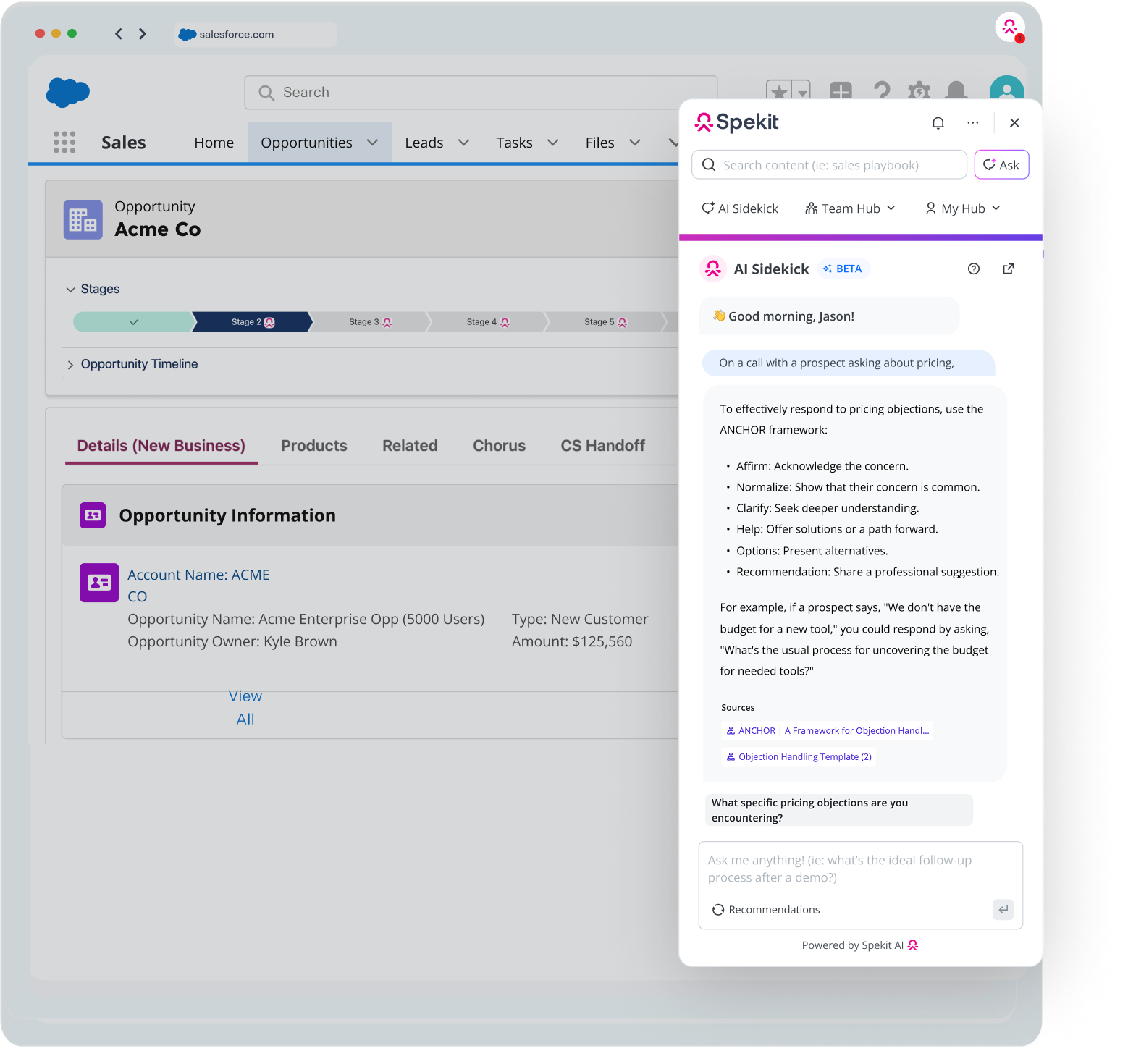
The Harvard Business Review revealed that sales teams consistently using sales scripts are 48% more effective than those that don’t.
Sales scripts enable businesses to build a structured framework for reps to follow when conversing with clients. They are written based on buyer personas and specify topics and discussions that suit different customers and prospects. This study explains that customers respond positively to scripted communication.
Here’s how it works. With a sales script, reps already have an idea of how specific customers or prospects are going to respond to pitches. This enables them to focus more on the prospect's responses and give fast, personalized answers rather than thinking what to say. In turn, prospects gain some confidence in the ability of your product to solve their problems since the rep clearly understands what the prospect needs.
For a sales script to help reps sell better, it has to be consistent and replicable, effectively overcome objections, negate price objections, have conversational content, and include an urgent call to action that prompts prospects to take action.
Pitch Decks
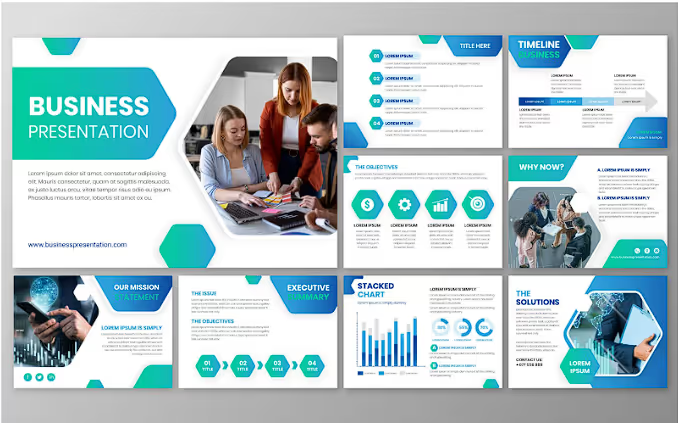
One thing that differentiates a business is its ability to use storytelling elements to sell. Pitch decks are a great storytelling tool designed to convince investors to work with a business or support with additional funds. They are short presentations in slide format i.e., PowerPoint, Google slides, or Keynote that summarize your business mission, vision, plan, the problem you’re solving, unique offering, and financials.
Pitch decks are for one-on-one interactions with conversations between sales reps and investors either in-person or virtually, and despite all the salesy information contained in a pitch deck, it isn’t intended to close a deal but rather to emphasize the value and ROI of your product and motivate an investor to continue the conversation with you about your product offerings. This means that your pitch deck must answer two essential questions: what are you offering? and why should your leads care?
Many people confuse a pitch deck with a sales deck, but both have different information and target audiences. Pitch decks are used to engage investors and convince them to invest in a business, and sales decks are client-focused documents meant to convince a prospect to purchase a product.
Prospecting Tips
Prospecting is the first stage in the sales process. Here, sales reps need to know how to identify target customers, verify that they fit your product’s buyer persona, and engage them successfully using various mediums. That’s where prospecting tips come in.
Prospecting tips ensure your salespeople are not wasting time and resources by targeting the wrong customers. It also narrows down where to find prospects, how to analyze their profile, how to speak to them, and how to follow up on conversations.
According to Forbes, prospecting tips enable reps to:
- Generate quality leads
- Understand customers in-depth
- Hold personalized conversations with prospects
- Close deals faster
- General referrals from happy customers.
Let’s say you run an accounting business and want to target new customers on LinkedIn; you can use a LinkedIn Sales Navigator Prospecting Tip to guide reps on how to reach your target audience using sales navigator features like alerts, social listening, and custom lists for filtering lead searches.
What is sales collateral management?
Sales collateral management is about intelligent orchestration.
Modern platforms like Spekit use AI-driven content management to automatically detect outdated materials, flag duplicates, and recommend updates. Every piece of content is instantly accessible, measurable, and personalized for the rep viewing it.
Traditional CMS tools rely on manual tagging and upkeep. Spekit automates this process through contextual AI and CRM integration, ensuring reps always have the latest, most relevant content in their flow of work.
Why is sales collateral management important?
Sales collateral management is the connective tissue between enablement and execution. Without it, content decays, engagement drops, and deals stall.
Spekit bridges this gap by embedding content, coaching, and measurement directly into daily workflows, empowering teams to communicate, reinforce, and measure change without disrupting productivity.
In Spekit CEO, Melanie Fellay’s, words:
“Enablement doesn’t stick because it’s not delivered in context. Reps need knowledge at the exact moment of need, not buried in a portal they’ll never open.”
Sales collateral management best practices
Now that you understand how sales collateral and enablement collateral fits into the buyer’s journey, let’s look at best practices for managing sales collateral:
Organize Your Sales Collateral
Having an organized system for sales collateral supports content governance, making it easy for sales reps to navigate content and find what they need. In many businesses, most sales collateral is used less than 10 times despite being available because of poor organization.
You should optimize your sales collateral for findability by creating a logical and structured process for designing, storing, accessing, and delivering sales collateral. Content can be categorized by buyer persona, department usage, customer journey, and other relevant criteria.
Connect sales reps to the right collateral
Giving your sales reps access to the right collateral at the right time can significantly improve their productivity and help them close more deals. For example, when you categorize sales collateral according to the buyer journey, reps will know exactly which content to use. They won’t have to spend time searching for content or figuring out if it's relevant to a prospect.
Sales collateral should also be designed with reps in mind. You want reps to automatically find deal-accelerating content effortlessly and access and share collateral with prospects. You can do this using a top enablement platform like Spekit. Spekit is a CMS replacement built to optimize the sales rep experience. It has everything you need to streamline content management with a less clunky interface. Here’s how Spekit helps you connect reps to the right collateral:
- Automate Content Curation – Use AI to surface relevant materials based on deal context, not manual tagging.
- Connect to Revenue – Tie every content view to influenced pipeline and closed-won outcomes with Revenue Insights.
- Eliminate Friction – Embed enablement where work happens with AI Sidekick and Deal Rooms.
- Reinforce Continuously – Replace “one-and-done” onboarding with everboarding powered by Playlists that evolve as roles and processes change.
- Govern Intelligently – Spekit’s Governance Dashboard flags outdated or underperforming content automatically—so teams spend less time auditing and more time selling.
Map Sales Materials to the Buyer Journey
The best sales collateral keeps the buyer in mind and aligns with the buyer's journey. Even if you’ve created compelling top-class content, it won’t work if used at the wrong stage. Prospects only want to see relevant information.
Let’s say you provide project management software to help businesses carry out their projects effectively. Your sales reps have found new leads using the LinkedIn navigator tip and sent whitepapers to them. They wait for leads to get back to them, but none do because whitepapers have low success rates at the start of the buyer journey. Directing leads to a blog post or infographic would work better.
Here’s a breakdown of where sales collateral falls in the buyer journey:
- Awareness: Blogposts, social media campaigns, EBooks, website landing pages, newsletters, pillar pages, infographics, etc.
- Consideration: Brochures, product catalogs, data sheets, case studies, whitepapers, videos, etc.
- Decision: Proposals, demo presentations, digital reports, etc
Keep in mind that these stages sometimes overlap and content usage should be flexible enough to accommodate that. For example, webinars can be effectively used in all three buyer journey stages.
Use Sales Collateral Management Tools
There are many options to help you organize and connect your sales reps to the right collateral. Most businesses start using a file-sharing platform like Google Drive or Dropbox, but it's pretty easy for these platforms to become scattered and overrun with information no matter how you categorize content.
Using sales enablement software for collateral management is much better. These platforms have tools specifically built for sales and revenue enablement. An effective sales content management software not only streamlines document organization but also enhances accessibility, ensuring that sales reps always have the right content at their fingertips. They offer far more advanced features like in-context recommendations, knowledge bases, and content usage analytics.
When choosing sales collateral management software, you should consider:
- If it has an intuitive and interactive user interface
- Whether it supports easy document creation and sharing
- If the software can easily integrate with workflows and other enablement tools
- If it enables you to analyze and measure sales collateral effectiveness
Spekit’s sales enablement platform is purpose-built for sales reps. Its sales content management platform is more flexible than a traditional CMS, with a low learning curve and intuitive features. With Spekit, you can quickly create sales content, embed sales content in workflows, and assess sales collateral effectiveness.
Learn more about Spekit here.
Measure Sales Collateral Effectiveness
Sales collateral could be ineffective for many reasons, including wrong or inconsistent usage, low customer conversion rates, and wrong targeting. To prevent this, you should regularly measure sales collateral effectiveness to immediately know what’s working, what isn’t, and how content is being used.
Several metrics can be used to measure effectiveness; you need to be clear on your business goals, KPIs, and what metrics drive them. Standard metrics to track are:
- Conversion Rate: The number of prospects that respond to a desired call to action after interacting with sales collateral.
- Sales Cycle Length: Monitor the average time it takes for reps to convert prospects after they’ve interacted with sales content.
- Content ROI: Measures the financial return on sales content strategy to guide your spending.
- Traffic: You can track the traffic generated by content published on websites or blogs to understand how prospects find your business.
- Engagement Rate: Track the time prospects spend on collateral to see drop-off or click-through rates. You can easily do this using a tool like Spekit’s Smartsend that enables you to share trackable sales content from any workflow.
More about sales collateral management
Here’s additional information on sales collateral management:
Sales collateral vs marketing collateral
Sales collateral and marketing collateral are both enablement tools that businesses use to promote their product and gain new customers. However, their purposes differ.
Sales representatives use sales collateral to pitch and convince prospects about the value proposition of your product. It is more suited for the consideration and decision stage of the buyer’s journey, where prospects are already aware of your product, and it can help them. Sales collateral serves as the push prospects need to purchase. It enables reps to nurture leads, increase brand loyalty, and turn customers into brand advocates.
Marketing collateral is used to build awareness and funnel prospects. It includes printed media like brochures, point-of-sale posters, roll-up banners, or digital media like EBooks and newsletters. Marketing collateral focuses on moving the business through product launches and awareness campaigns to educate customers about the problem your business is solving. Effective marketing collateral management ensures these materials are organized and accessible to support the sales process.
What is included in sales collateral?
Sales collateral covers all digital or print resources and documents that help generate leads and support the sales process. Therefore, anything information about a business's products, services, or features that fall within this scope is included in sales collateral.
What should be included in sales enablement?
Sales enablement rests on three pillars: a clearly defined sales process and methodology, sales training and coaching strategy, and internal and external sales content strategy.
It should provide a structured roadmap from prospecting to closing deals aligned with pre-determined KPIs. Sales reps should also be consistently trained, focusing on ramping up onboarding for new reps, ever-boarding current reps, and enabling sales leads. Then, sales enablement content should align with the sales process and training strategy.
What collateral would be most valuable to a sales team?
73% of B2B buyers highlight case studies as a key factor that drives their purchasing decision, and some don’t even consider product offerings without first seeing a case study. Case studies are like in-depth product reviews; product reviews have more credibility than other information shared with prospects.
Case studies are valuable assets in sales enablement. Using a case study, you can present an analysis of the real-world problem prospects are facing and illustrate how clients achieved success using your product.
In this case study, Sendlane, an email and SMS marketing platform for eCommerce brands reveals how Spekit enabled them to grow their sales team from 2 to 20 salespeople, ramp up reps fast, and generate $3.7 million in the pipeline in just six months.
Use the Best Sales Collateral Management Platform
The era of static collateral is over. Enablement is becoming personalized, measurable, and AI-powered.With Spekit, your collateral doesn’t just inform it sells, coaches, and evolves.
If your team is ready to move from scattered content to a unified, intelligent system that drives measurable revenue impact, it’s time to explore the future of enablement: Just-in-Time, in the flow of work™.

